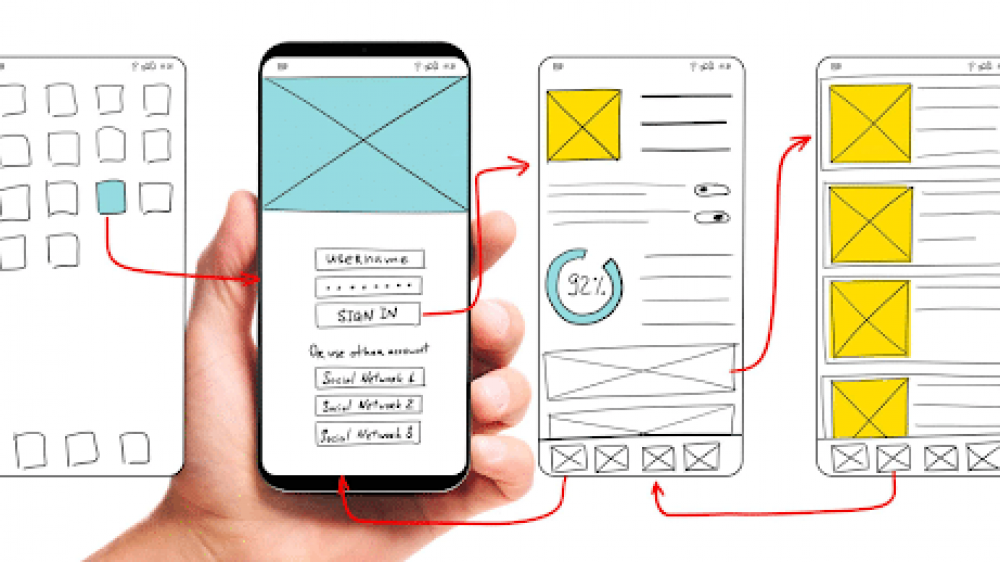
Due to the rapid advancement of technology, user experience (UX) research is constantly changing.
UX research aims to answer two crucial questions: What do users hope to accomplish with this product or service, and who are they? Can consumers achieve their objectives using this product effectively and efficiently?
UX researchers use various techniques—user interviews, questionnaires, and surveys—to address these queries. UX research offers priceless information early in the design process, directing choices and reducing the possibility of expensive redesigns.
This article digs deep into the top five benefits of UX research for your business in 2025.
RELATED POSTS
- 5 PROVEN TIPS TO IMPROVE NEXT.JS SEO FRIENDLINESS – CHARISOL
- 11 STATIC SITE GENERATORS TO SIMPLIFY YOUR SITE
- A COMPLETE GUIDE TO ANGULAR UNIT TESTING IN APP DEVELOPMENT
- 7 GAME-CHANGING UPDATES FOR FRONTEND DEVELOPERS
What Is UX?
User Experience (UX) is a user’s overall impression and level of pleasure while using a system, product, or service. UX design aims to provide consumers with useful, pleasurable, engaging, and fulfilling products. The immediate experience with the product is only one aspect of this complete viewpoint. UX research considers the complete user journey, which includes:
- Direct interactions: This refers to how users interact directly with the product’s features, interface, and functionalities.
- Indirect interactions: This means how the product fits into the user’s daily schedule and overall workflow.
- Emotional reactions: This aspect refers to consumers’ sentiments and sensations when interacting with the goods.
User Experience (UX) includes every facet of the user’s journey, from initial awareness and exploration to continued use and assistance. It acknowledges that each interaction—direct or indirect—between the customer and the business influences the user experience.
Difference Between UX and UI
Although they are sometimes used synonymously, User Interface (UI) and User Experience (UX) are two different ideas.
User Interface describes the interactive and visual components that users interact with directly when using a product. It is the product’s “look and feel”—its buttons, menus, text fields, pictures, and general appearance. UI is the product’s visual representation.
User Experience describes the entire user journey, which includes every facet of a user’s engagement with a product or service. This comprises:
- Usability: The product’s ease of use and effectiveness.
- Utility: The degree to which the product satisfies the demands and objectives of the user.
- Findability: The ease with which users can find the required features or information.
- Accessibility: The degree to which individuals with disabilities can use a product.
- Desirability: Considers if using the thing is pleasurable and fulfilling.
- Usability: The degree to which a product is simple for people to understand and utilize efficiently.
UI and UX are quite different. UX focuses on the user’s journey and satisfaction, while UI focuses on the product’s visual and interactive aspects.
What Is UX Research?
UX research is the foundation of good product design. Understanding users’ requirements and behaviors is critical to producing goods that genuinely connect with their target market.
Fundamentally, UX research seeks to respond to two questions:
- What are the objectives of the users? Designing successful solutions requires a thorough understanding of the target audience, their motivations, and the difficulties they encounter.
- How can the product assist users in accomplishing their objectives? This entails comprehending user behavior, recognizing problems, and ensuring the product is simple, effective, and pleasurable.
Prioritizing user research throughout the design process helps organizations produce functional, user-centered products, which increases user satisfaction and boosts company success.
Types Of UX Research
UX research is a strategic investment with substantial returns. Businesses with a thorough understanding of user needs and habits can use UX research to help build compelling products and satisfy user needs. UX research methods include:
Qualitative Research
Qualitative user research aims to comprehend consumers’ varying subjective experiences and viewpoints. Investigating the “what,” “why,” and “how” of user interactions with a design is the focus of qualitative research. Through moderated sessions like focus groups and one-on-one interviews, researchers can interact directly with people and obtain necessary information about the following:
- user attitudes and motivations: This refers to recognizing the fundamental reasons behind users’ actions and the reasons behind their product use.
- user needs and pain points: This determines the difficulties and annoyances users face when using the product.
Qualitative research is especially beneficial in the early stage of the design phase since it offers crucial insights that guide decisions and helps avoid expensive redesigns later in the development cycle.
Features:
- Comprehensive insights: Qualitative research offers profound and comprehensive insights into user viewpoints and experiences.
- Flexibility: Makes it possible to investigate surprising results and generate fresh ideas.
- Comparatively less expensive: Qualitative research usually requires a smaller sample size than quantitative research.
Although qualitative research provides insightful information, it’s crucial to remember that the researcher’s abilities and background significantly impact the quality of the results.
Quantitative Research
Quantitative user research aims to better understand user behavior and preferences by gathering and evaluating numerical data. It uses statistical techniques to respond to queries such as:
- “How many users perform this action?”
- “What percentage of users prefer this feature?”
- “How often do users visit this page?”
Features:
- Closed-ended survey questions: Collecting numerical data through rating scales, multiple-choice, and other structured questions.
- Quantitative measures for usability testing: This involves evaluating user performance on specific activities, such as error rates and task completion times.
- Web analytics: This monitors user activity on websites, including time spent on the site, page views, and click-through rates.
Quantitative research offers essential insights into consumer preferences and behavior at scale.
By integrating qualitative and quantitative research techniques, UX researchers can better understand user requirements and preferences and make more efficient design decisions.
Top Benefits Of UX Research For Businesses in 2025
Any product or service’s success depends on doing in-depth and perspective UX research.
Here are some benefits of UX research:
1. Streamlines the design process and associated cost
Researching user experience (UX) is not merely a “nice-to-have” but an essential investment that can save development expenses. By prioritizing user needs and conducting thorough research upfront, organizations can create successful, efficient, and cost-effective products. Gaining a comprehensive understanding of your target audience’s requirements and habits allows you to:
- Avoid expensive errors: By identifying customer needs upfront, UX research reduces the possibility of creating the “wrong” product. This avoids expensive redesigns, revisions, and the creation of features that users don’t genuinely require or desire. Investing in UX research upfront is considerably less costly than paying for design corrections and feature redesigns later in the development cycle.
- Gain efficiency: Early user input improves the design and development process, resulting in shorter development cycles and a quicker time to market.
- Increase user satisfaction: Happy customers are more likely to use, interact with, and refer a product to others, which boosts revenue and customer loyalty.
- Accelerate development: By being comprehensively aware of user needs, development teams can streamline the design and development process and work more productively.

2. Ensures you are open-minded in your design approach
Confirmation bias can seriously impair UX research’s efficacy. It happens when researchers look for and analyze data that supports their preconceived notions or views about users and their requirements.
To reduce confirmation bias, it is essential to:
- Disprove preconceived beliefs: Examine your presumptions about the product and the target market. Don’t look for material that only supports your pre-existing opinions. Avoid leading questions, and ensure your research inquiries are objective.
- Give data-driven insights priority: Make decisions based on factual information from user research rather than your beliefs or presumptions. Employ a range of research techniques to collect various viewpoints and avoid confirmation bias.
- Adopt a user-centric mindset: Instead of imposing your preconceived notions, take a user-centric approach to comprehend user wants and behaviors.
Important techniques for resolving confirmation bias:
- User interviews: Conduct in-depth interviews with target users to obtain a range of viewpoints and unearth surprising discoveries.
- Surveys: To obtain objective information about user preferences and opinions, combine closed-ended and open-ended questions.
- User personas: Create thorough user personas based on research data, steering clear of conjecture and concentrating on actual user requirements and behaviors.
- Question presumptions and give data-driven insights top priority, adopting a user-centric strategy.
3. Saves time
In the long term, UX research saves time, money, and resources, even though the first investment may seem like an extra cost.
More advantages include:
- Enhancing market-product fit:
User research can help you develop products that resonate with your target market, offering insightful information about customer needs, preferences, and habits.
Higher engagement and user satisfaction result from this, eventually boosting product success.
- Simplifying development:
Knowing user wants and expectations early on can help development teams concentrate on creating the appropriate features and functions. This speeds up development cycles and increases efficiency.
- Improving efficiency:
Reducing the need for costly redesigns and rework due to unforeseen usability issues streamlines the development process and improves efficiency.
While UX research requires an initial investment of time and resources, the long-term benefits outweigh the initial costs.
4. Increases revenue
In the long term, UX research gives a substantial return on investment. Gaining a thorough understanding of your target market allows you to achieve this, and this can be done by:
- Educating product development:
UX research helps avoid expensive errors like creating products or adding features that users don’t need or fall short of their expectations.
Get user input on possible product names to ensure they are catchy, pertinent, and appealing to the intended market. Establish which features are most important to direct resource allocation and development activities.
You must also determine which platforms will help you reach your target market and launch your product.
- Enhancing communications and marketing:
Businesses can boost income through more targeted and effective marketing campaigns.
Refine your target audience profiles based on user research data to enable more efficient and focused marketing efforts. This will help you create persuasive marketing messages that address users’ needs and problems.
5. Provides a competitive advantage
In the current market, UX research offers a substantial competitive advantage.
Businesses that have a comprehensive understanding of user preferences and demands can:
- Set themselves apart: A better grasp of consumer demands and expectations enables businesses to develop distinctive and inventive products that distinguish themselves from their competitors.
- Boost client happiness: Providing outstanding user experiences that exceed users’ expectations will encourage repeat business and customer loyalty.
- Reduce customer churn: Fixing usability problems and developing user experiences that are simple and pleasurable can minimize customer annoyance and discontent.
Here’s how to use UX research to gain competitive advantage:
- Gain insightful knowledge about the market: Analyze competitors’ products by watching how users engage with them to find areas that could use improvement and chances to stand out.
- Make data-driven decisions: Use reliable user data and insights to inform marketing plans and product development.
- Optimize resource allocation: Concentrate development efforts on the products and features users care about to reduce time and resource waste.
- Boost your brand’s reputation: Create a powerful brand identity by showcasing your dedication to user-centered design and providing outstanding user experiences.
In today’s competitive business environment, investing in comprehensive UX research is not merely a choice; it is needed for companies to succeed.
Conclusion
There are other benefits of UX research; however, the most significant ones have been listed in this article. Your business can experience an excellent turnaround for good when you implement UX research in the development phase of your products and services.
Knowing user needs and preferences can help you create user-friendly and intuitive experiences that boost conversions, customer happiness, and customer loyalty.
We at Charisol are strong proponents of user-centered design. We conduct in-depth research to comprehend your target audience’s needs and behaviors. Our data-driven approach allows us to develop goods and services that genuinely appeal to your clients.
Sign up for our newsletter to get regular updates and news on UX research and its benefits to businesses in 2025.
READ MORE: THE FUTURE OF IOT: HOW EDGE COMPUTING IS LEADING THE CHARGE

